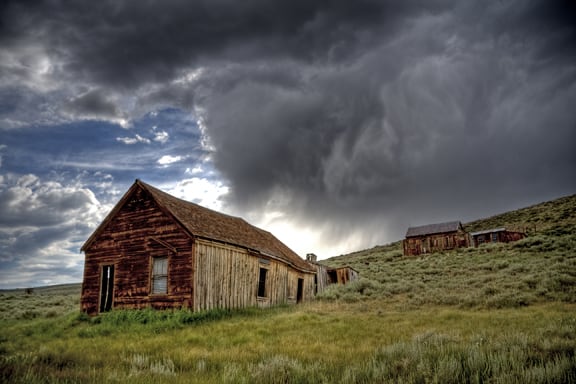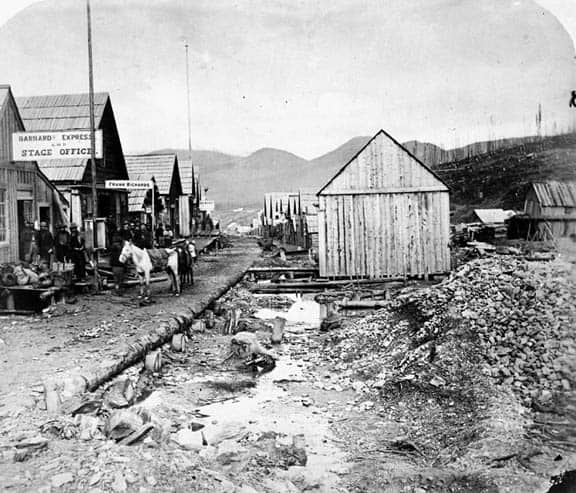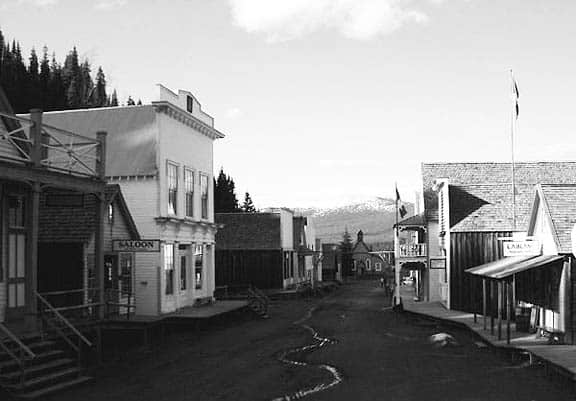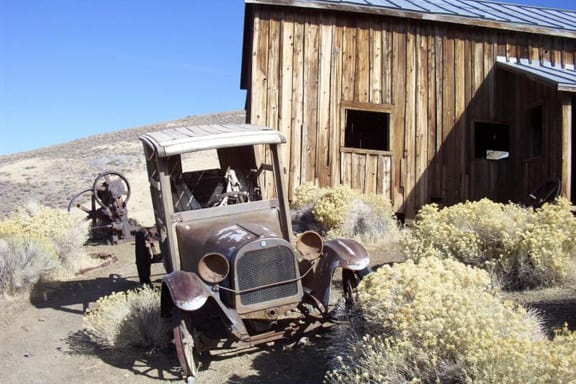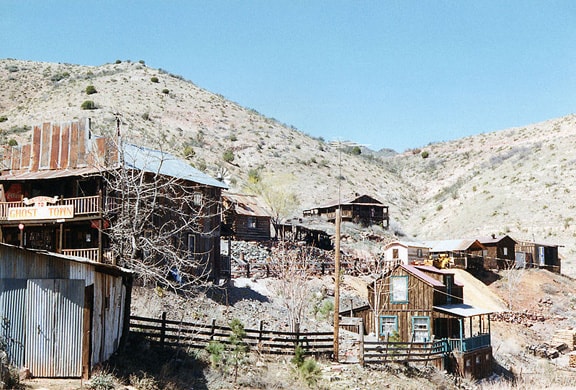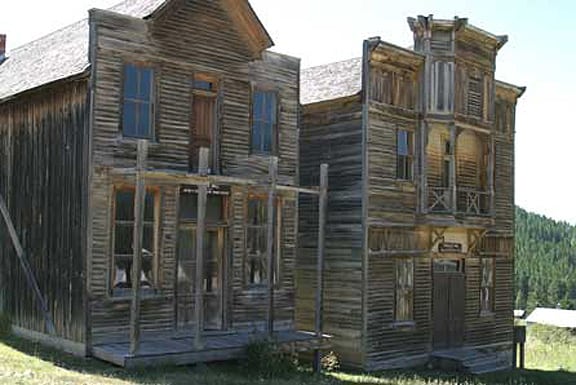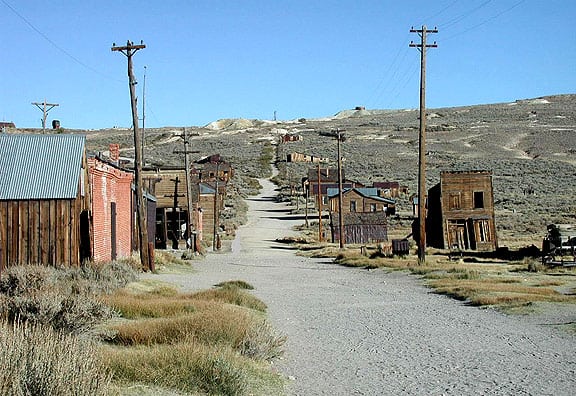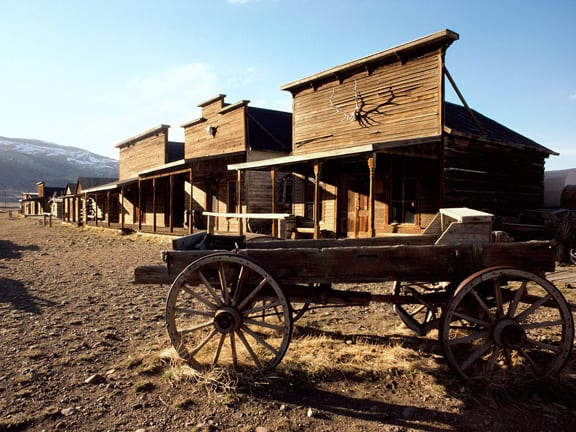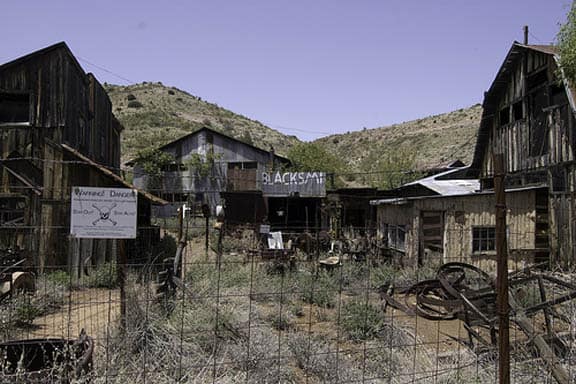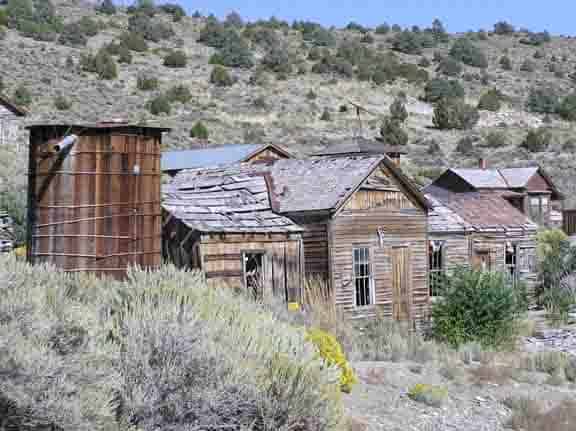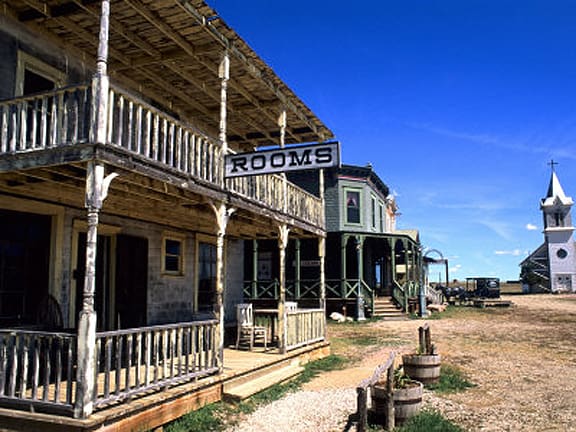Stormy day at the Bodie Historic State Park
Post inspired by Tom Doligale
One can only imagine the condensed society and lifestyle in these towns that sprouted up, flourished and essentially died in the blink of an eye. The whiskey, women, song and toil making for a tough but sometimes highly profitable return.
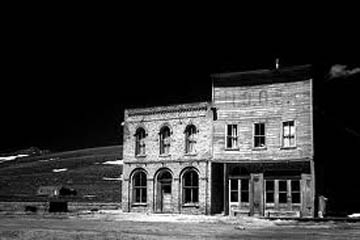 Ghost Town: A ghost town is an abandoned village, town or city, usually one which contains substantial visible remains. A town often becomes a ghost town because the economic activity that supported it has failed, or due to natural or human-caused disasters such as floods, government actions, uncontrolled lawlessness, war, or nuclear disasters. The term is sometimes used to refer to cities, towns, and neighborhoods which are still populated, but significantly less so than in years past; for example those affected by high levels of unemployment and dereliction.
Ghost Town: A ghost town is an abandoned village, town or city, usually one which contains substantial visible remains. A town often becomes a ghost town because the economic activity that supported it has failed, or due to natural or human-caused disasters such as floods, government actions, uncontrolled lawlessness, war, or nuclear disasters. The term is sometimes used to refer to cities, towns, and neighborhoods which are still populated, but significantly less so than in years past; for example those affected by high levels of unemployment and dereliction.
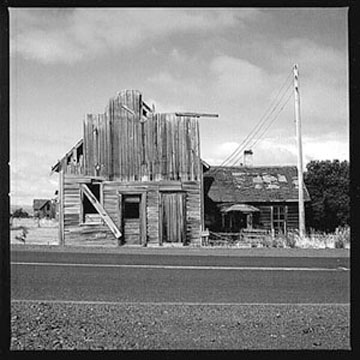 Definition: The exact definition of a ghost town varies between individuals, and between cultures. Some writers discount settlements that were abandoned as a result of a natural or human-made disaster, using the term only to describe settlements which were deserted because they were no longer economically viable; T Lindsey Baker, author of Ghost Towns of Texas, defines a ghost town as “a town for which the reason for being no longer exists”. Some believe that any settlement with visible tangible remains should not be called a ghost town; others say that a ghost town should contain tangible remains of buildings. Whether or not the settlement must be completely deserted, or may contain a small population, is also a matter for debate. Generally, though, the term is used in a looser sense, encompassing any and all of these definitions. The author Lambert Florin once described ghost towns as “a shadowy semblance of a former self”.
Definition: The exact definition of a ghost town varies between individuals, and between cultures. Some writers discount settlements that were abandoned as a result of a natural or human-made disaster, using the term only to describe settlements which were deserted because they were no longer economically viable; T Lindsey Baker, author of Ghost Towns of Texas, defines a ghost town as “a town for which the reason for being no longer exists”. Some believe that any settlement with visible tangible remains should not be called a ghost town; others say that a ghost town should contain tangible remains of buildings. Whether or not the settlement must be completely deserted, or may contain a small population, is also a matter for debate. Generally, though, the term is used in a looser sense, encompassing any and all of these definitions. The author Lambert Florin once described ghost towns as “a shadowy semblance of a former self”.
Reasons for Abandonment:
Factors leading to abandonment of towns include depleted natural resources, economic activity shifting elsewhere, railroads and roads bypassing or no longer accessing the town, human intervention, disasters, massacres, wars, and the shifting of politics or fall of empires. [source Wikipedia]
In looking at Ghost Towns, the one that struck me as one of the more interesting is Barkerville, British Colombia. Once the largest city north of San Francisco and west of Chicago, Barkerville was situated on the western edge of the Cariboo Mountains. It was likely named after Billy Barker from Cambridgeshire, England, who was among those who first struck gold at the location in 1861, and whose claim was the richest and most famous.
Barkerville grew up almost overnight, and was a case of “growth via word of mouth”. Barkerville grew as fast as word of Barker’s strike spread. His claim would eventually yield 37,500 ounces (1,065 kg/2,350 lb) of gold.
movers of freight boasted that they could pack and carry a set of champagne glasses without any breakage
Before the construction of the Cariboo Wagon Road, people hauled their own supplies to Barkerville, either on their backs or in a pack train. Because supplies were scarce, the prices of even the most everyday items were extremely high. High prices for goods in Barkerville did not ease up until the Cariboo Road had been finished, when goods could be transported by huge freight wagons. Soon, movers of freight boasted that they could pack and carry a set of champagne glasses without any breakage – for a price, of course. More women also came to Barkerville after the construction of the Cariboo Road.
Barkerville (1865)
It had several general stores and boarding houses, a drugstore that also sold newspapers and cigars, a barbershop that cut women’s as well as men’s hair, the “Wake-Up Jake Restaurant and Coffee Saloon”, a theatre (the Theatre Royal), and a literary society (the Cariboo Literary Society).
At first, the town consisted only of makeshift cabins and tents. By the mid-1860s, however, Barkerville had a population of approximately 5,000. Even though its population was transient and largely dependent on mining, Barkerville was becoming less of a service town and more of a real community. It had several general stores and boarding houses, a drugstore that also sold newspapers and cigars, a barbershop that cut women’s as well as men’s hair, the “Wake-Up Jake Restaurant and Coffee Saloon”, a theatre (the Theatre Royal), and a literary society (the Cariboo Literary Society). Horse racing and prize fighting were common entertainments. Among the so-called “sober set,” church services were extremely well attended, but even with all these different stores the ones that made the most were the general stores. With them as the only source of food the store owners started increasing the price of food and supplies. In the height of the gold rush the stores sold flour for as high as $1.25 per pound. Beans, meat, and dried fruit were sold for a dollar a pound. But as the gold rush ended the stores went bankrupt and in the end were left with nothing.
Chinese were an important part of Barkerville life for almost a hundred years. They established a number of businesses, including the Kwong Lee Company, a general store that sold groceries, clothing, hardware, and mining tools. The company had stores in other parts of British Columbia, but the Barkerville store was one of the most impressive in town. The Chinese community also built cabins (for Chinese miners, who saved money by sharing four or five to a cabin) and Tai Ping (the “Peace Room”), the equivalent of a modern nursing home. Chinese benevolent associations provided social services to the Chinese community, and also resolved disputes within the Chinese community without the use of BC courts.
On September 16, 1868, Barkerville was destroyed by a fire that spread quickly through the wooden buildings. Rebuilding began immediately, and at an impressive pace. Within six weeks, ninety buildings had been rebuilt. Boardwalks were improved and the narrow and winding main street was widened and straightened. By 1880, there were enough children in the area to build the Barkerville School. It had just thirteen pupils and one piece of school equipment – a chalkboard. Even so, Barkerville’s population was declining by the end of the century and it eventually became a ghost town. It did, however, have a small revival in the 1930s, when the Great Depression caused widespread unemployment, and the price of gold skyrocketed. But as the depression turned for the better, Barkerville fell back into an abandoned state.
In 1958, the government of British Columbia decided that the town should be restored and operated as a tourist attraction. Today, Barkerville appears as it did in its heyday, and visitors can step back in time and marvel at its past. Barkerville Historic Town now greets visitors from all over Canada and other parts of the world, including thousands of students. The history of each building has been meticulously researched and documented. No actual residents remain. They were either bought out or moved to New Barkersville during the restoration of the site. [Wikipedia]
G H O S T T O W N G A L L E R Y
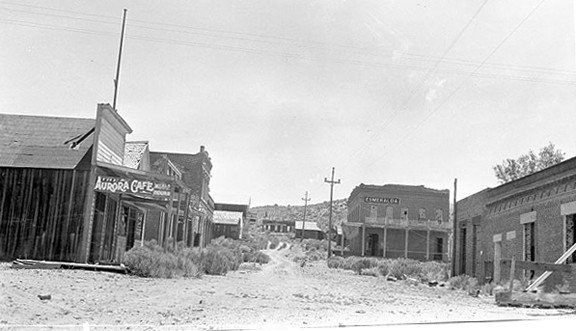
Aurora, Nevada is a ghost town located 13 miles east of its more famous successor Bodie California. Slowly being reclaimed by the beautiful terrain that it once stood upon, now almost nothing remains. The lack of available wood and the towns thirst for growth may be the main factor in its disappearance after it was abandoned in the early 1900’s.
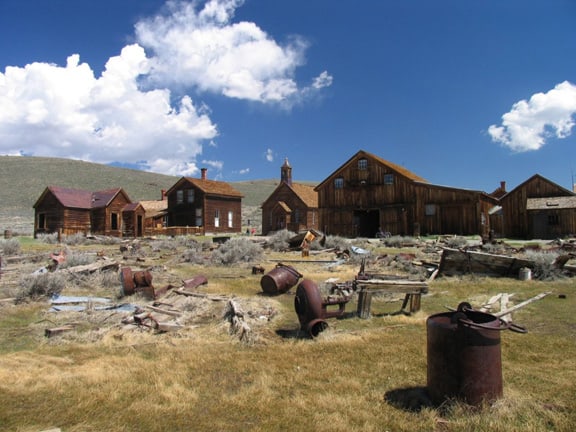
Bodie, California was a quintessential frontier town of the Old West, complete with dozens of saloons, a red light district and a Chinatown. Stories of its history include tales of barroom brawls, stagecoach robberies and other Wild West debauchery. Founded during the Gold Rush the town thrived through the early 20th Century but was subsequently deserted and now is preserved and partially restored to its original state.
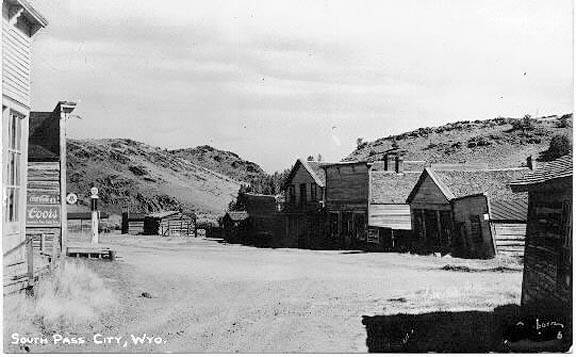
View of Sherlock Store, hotel, saloon, bank, and recorder’s office, South Pass City, Wyoming, undated.
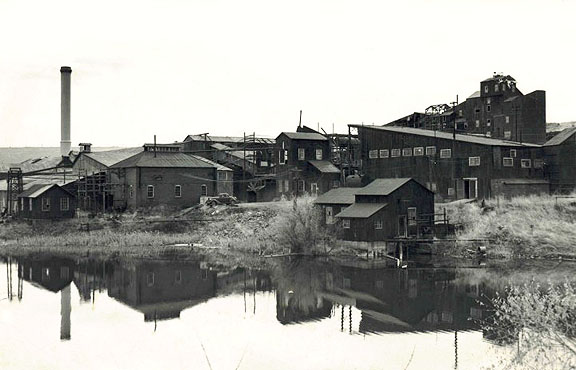
The golden Cycle Mill located on 21st Street across from The Roundhouse and Ghost Town Museum, in Colorado Springs. This once very active mill once processed much of the ore from the Cripple Creek and Victor Mining district. Incorporated in 1885 as the Golden Cycle Mining Corporation, the mill ran consistently with the exception of a fire in 1907, but resumed operation in 1908 after being rebuilt. In 1949 the mill was shut down and later dismantled, but through its many years of operation, it treated 13,564,982 ton of gold ore from the Cripple Creek district, and 794,280 tons from other areas in Colorado. This is one “Ghost” that is gone forever, but you can still see the tall smoke stack and tailings pile from both 21st street and Highway 24 in Colorado Springs.

